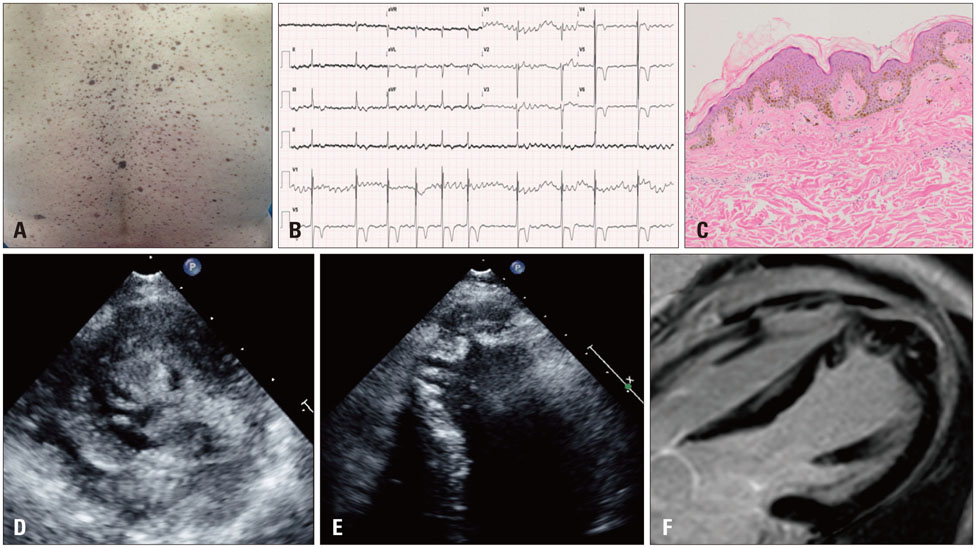J Cardiovasc Ultrasound.
2018 Mar;26(1):43-44. 10.4250/jcu.2018.26.1.43.
A Rare Case of Left Ventricular Noncompaction in LEOPARD Syndrome
- Affiliations
-
- 1Department of Internal Medicine, Gyeonsang National University School of Medicine, Gyeongsang National University Hospital, Jinju, Korea. jyhwang@gnu.ac.kr
- KMID: 2407681
- DOI: http://doi.org/10.4250/jcu.2018.26.1.43
Abstract
- No abstract available.
Figure
Reference
-
1. Voron DA, Hatfield HH, Kalkhoff RK. Multiple lentigines syndrome. Case report and review of the literature. Am J Med. 1976; 60:447–456.2. Martínez-Quintana E, Rodríguez-González F. LEOPARD syndrome: clinical features and gene mutations. Mol Syndromol. 2012; 3:145–157.
Article3. Limongelli G, Pacileo G, Marino B, Digilio MC, Sarkozy A, Elliott P, Versacci P, Calabro P, De Zorzi A, Di Salvo G, Syrris P, Patton M, McKenna WJ, Dallapiccola B, Calabro R. Prevalence and clinical significance of cardiovascular abnormalities in patients with the LEOPARD syndrome. Am J Cardiol. 2007; 100:736–741.
Article
- Full Text Links
- Actions
-
Cited
- CITED
-
- Close
- Share
- Similar articles
-
- Noncompaction of Ventricular Myocardium Involving the Right Ventricle
- A case of isolated noncompaction of the ventricular myocardium in an elderly patient
- Stroke in a Young Individual with Left Ventricular Noncompaction and Left Atrium Standstill
- Anesthetic experience of patient with isolated left ventricular noncompaction: a case report
- The Management of Cardiovascular Abnormalities in Patient With LEOPARD Syndrome


